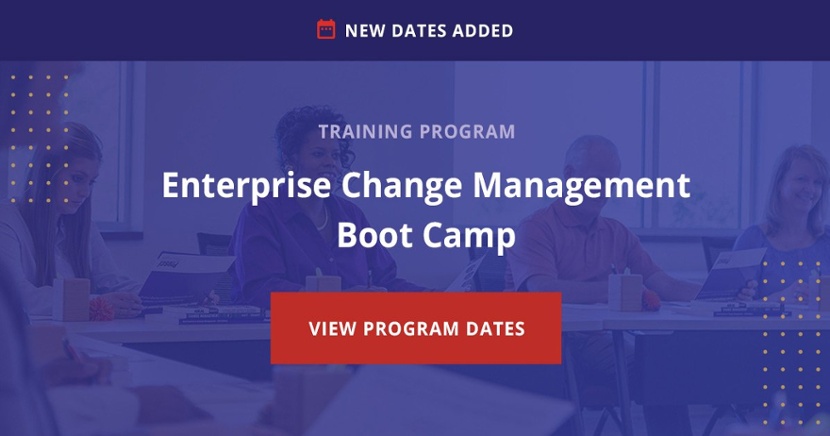Building Enterprise Change Competency at Matthews International

5 Mins
Updated: August 5, 2024
Published: January 26, 2022

How did a fast-growing global company comprised of three diverse business segments with 250 locations across 26 countries on six continents build meaningful enterprise change competency in just over three years? And while navigating a global pandemic? What began as an effort to integrate a newly acquired company into Matthews International has blossomed into to a full-blown enterprise change management (ECM) initiative with no signs of slowing. Here’s how we got started.
Global Change Management
Matthews International is a global leader in consumer products, branding solutions, memorialization products and solutions, industrial technology, and more. When our journey to embed enterprise change management competency began, the company had a distributed organizational structure with independently operating business units, each having significant differences that impacted how we deployed change management solutions, including:
- Business units applying unique sets of tools and systems
- Business units applying multiple practices
- Business units and regions identifying with disparate cultural norms
- Business units possessing unique mindsets ranging from progressive to more traditional
- Global time-zone differences
Commitment for Change Management
Our effort to build a change management team and strategy began with the largest business acquisition in the organization’s history. I was hired to lead the integration of two large entities by embedding change management and ensuring alignment and linkages from the acquired organization back to the corporate entity, along with ensuring successful implementation of common technology systems like SAP. At that time, Matthews did not use a standard change management methodology. We applied a variety of strong change tools from IBM, KPMG, LaMarsh, Kotter, and other approaches, adapting them in an attempt to develop a simplified, standard Matthews change model.
But the approach was too complex. Instead of giving leaders an elevator pitch, I was giving a whole dissertation on the value of change management to help them understand what we were trying to do. They’d just look at me and ask me to write up the meeting minutes and email them out. Despite my intentions, I was relegated to communications because what I presented was too burdensome for leaders.
After reflecting on the initial methodology results, I realized what we needed was to embed change capability into the culture and how we worked. And after doing some research on enterprise change management, I registered for Prosci’s Enterprise Change Management (ECM) Boot Camp. At the time, I didn’t feel strongly about Prosci because I already had a master’s degree in change management and firmly understood the value it could bring to realizing strategic and project goals. But my experience with ECM Boot Camp revealed the beauty of the Prosci Methodology and led me to become a Prosci Certified Change Practitioner and Train the Trainer in 2017.

Starting To Build Change Management Competency
Sparks began to fly, so to speak, after I delivered change practitioner courses internally to employees in our branding organization, which is on the more progressive side of the spectrum at Matthews. Those practitioners had success on a few initial projects, and soon other areas of the business started calling and saying, “I want what they’re having in that business unit,” and “Whatever they’re doing with that project, we need to make more of that all around the organization because it’s really effective and we’re getting buy-in from across the globe.”
So, it started with one business unit. After that, I went on journey around the world to train managers and influencers on their roles in change. This created a network of people who understood the Prosci Methodology and helped us embed a new enterprise-wide customer engagement tool. Within a few months, things just started catapulting into a corporate-wide effort to embed change management. Project success was beginning to speak for itself—change management made a difference.
In 2019, we launched a multi-year organizational transformation (what we called “Project Sprint”) and a global business services strategy (GBS) to align services centers in different parts of the world. This was the catalyst to expand and evolve our change management competency on a global scale.
To make change management effective, we needed to engage with about a thousand people managers. I was still the primary change practitioner on the GBS initiative and a coach to change practitioners throughout the Matthews organization, so I didn’t really know how we would accomplish this. I just knew we needed to get it done.

Then the pandemic hit in 2020, which increased the urgency of GBS while making digital transformation necessary. It was a very complex situation and huge undertaking for Matthews, as it was for many organizations, and our employees really stepped up for our clients. I don’t want to give change management all the credit, but it did contribute to the can-do attitude our employees had because they knew Matthews was going to support individuals through their change journeys.

A Path to Enterprise Change Management Capability
Once change management had momentum, building enterprise change management competency across the global organization continued to grow almost organically. To date, we have certified 190 practitioners, trained over 900 people managers and change champions, and equipped dozens of sponsors for their roles in change.
Although every organization is different, our success at Matthews has been fueled by three key decisions: earning train-the-trainer certification, delivering virtual training programs, and acquiring a Prosci license.
1. Earning Train-the-Trainer certification
Being a Prosci Certified Train-the-Trainer was absolutely essential for what we needed to do as an organization, which was to build our network by training people internally. Budgetary constraints would not have allowed us to bring in others to build our change management competency and network for us. We also expanded our Prosci trainer network to seven trainers globally to support our rapid competency expansion in 2020.
2. Delivering virtual training programs
Prosci’s virtual training programs enabled global reach with localized trainings to develop new practitioners and equip people managers for their roles in change. We also used virtual trainings to develop a global change champion network, which is helping us address regional and cultural differences with impacted people and in the approaches we deploy.
3. Acquiring a Prosci License
If we were going to get the critical mass to support 11,000 employees on a global scale, we needed an affordable way to do it. When we looked at the Organizational Change Competency License, and the results we got simply from engaging with sponsors up to that point, it was an easy decision for the organization. That opened the floodgates of possibilities for us to train a wide range of employees.
The license has been brilliant because it helps us maintain costs while delivering a quality program in person or virtually. Getting the license was a critical step we took to get where we are today. We would not have withstood all the COVID-related changes and the Project Sprint pivot while supporting the organization the way we did without it.
Enterprise Change Management Success
Often, novice practitioners get knee deep into a project and reach out to me for coaching on the Prosci Methodology and tools. In 2020, I became a Prosci Certified Advanced Instructor (PCAI), which enables me to to certify employees internally. It also supports my efforts to prepare, equip and coach our practitioners, employees and leaders globally.
I’m also the lead trainer at Matthews and have delivered more than 40 programs in the last two years with my teammates. In fact, I recently earned Globetrotter status in Prosci’s Train-the-Trainer Rewards. So, while I still roll up my sleeves for major projects, today I focus on embedding the Prosci Methodology and change management competencies throughout the organization.
Our journey to enterprise change capability is ongoing. But if you ask me whether Matthews is getting a good return on its investment, the answer is yes. I get feedback all the time from leaders in the business who say, “This stuff really works.” I get calls from people who attend trainings and say, “We’ve spent years working on initiatives with a lot of merit that had to be shelved, and now I know why. We focused on the installation and never thought about the people.” Some of those projects are getting pulled off the shelves now, and teams are starting to find success with them. That’s powerful.


